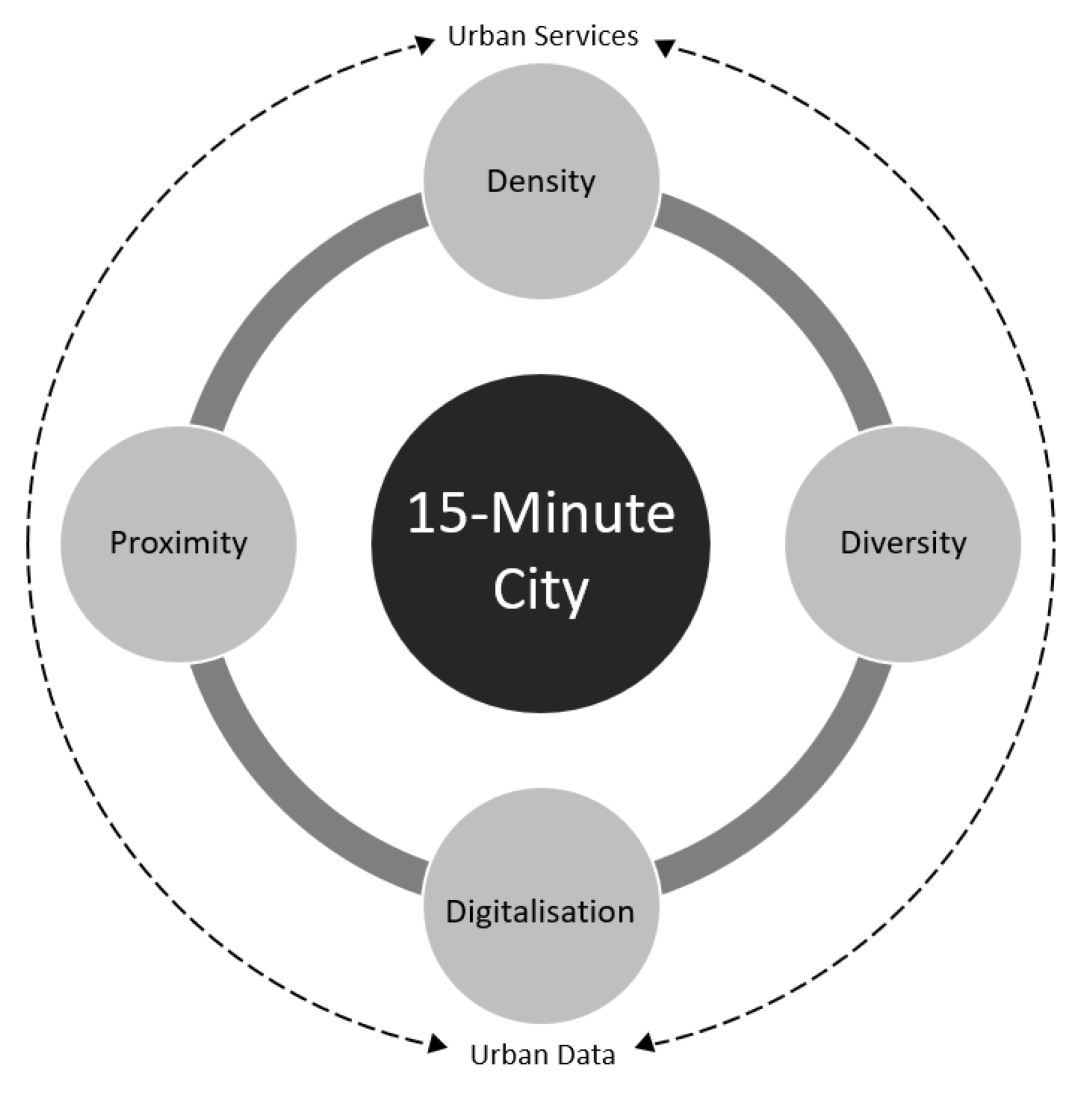Disclaimer:
Please be aware that the content herein is comprised of personal reflections, observations, and insights from our contributors. It is not necessarily exhaustive or authoritative, but rather reflects individual perspectives. While we aim for accuracy, we cannot guarantee the completeness or up-to-date nature of the content.
Images
Type of the Solution
Urban Planning
Affected Sector
Transport
Description of the solution
Initially proposed in 2016 by Carlos Moreno, the “15-Minute City” is an urban model that allows everyone, in every neighbourhood, to meet most of their daily needs within a short walk or bike ride of their home. Among other objectives, it aims to reduce unnecessary and unwanted travel and promote a modal shift away from private vehicles, delivering all the rewards of green and healthy transport and cleaner air. Overall, the goal is that of building safer, more resilient, sustainable and inclusive cities, as depicted in the Sustainable Development Goal 11. The concept has been adopted by Barcelona, Bogotá, Melbourne, Ottawa, Paris, and Shanghai.
Socio-economic effects
Increased accessibility to services, local economic development, health benefits from both active modes of transport (walking, biking, etc.) and improved air quality.
Type of Measure
3. mitigation measures
Type of sub-measure
5. (none)
Who led the solution
Other
Timescale of implementation
Medium-term (2-4 years)
Other Notes
This solution has its origin in academia and has so far been adopted in Barcelona, Bogot√°, Chengdu, Guangzhou, Houston, Melbourne, Ottawa, Paris, Portland, and Shanghai.
For more information on the implementation of 15-minute cities, see https://www.c40knowledgehub.org/s/article/Why-every-city-can-benefit-from-a-15-minute-city-vision?language=en_US
Links to the solution
 Consent to share form or official link.
Consent to share form or official link.

 3Good health and well-being
3Good health and well-being 11Sustainable cities and communities
11Sustainable cities and communities 13Climate action
13Climate action
Comments
Log in to add a comment or reply.